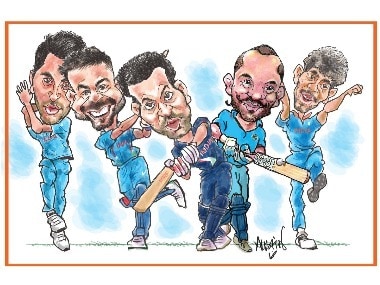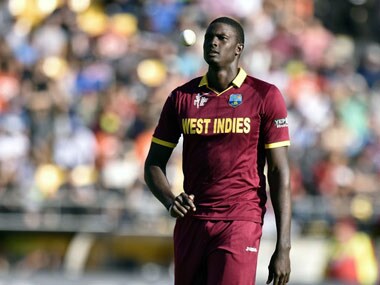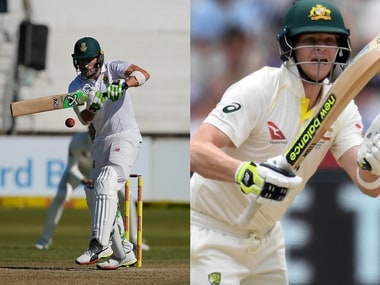BCCI contract system is an archaic remnant of the pre-Indian Premier League era
BCCI's contract system made sense when a little-known Debasis Mohanty was drawing as much match fee as a high performer like Sachin Tendulkar. The gradation of players to A, B, etc was a fallout of those sort of anamolies.
Vedam Jaishankar, March 10, 2018
| Rank | Team | Points | Rating |
|---|---|---|---|
| 1 | India | 5313 | 121 |
| 2 | South Africa | 4484 | 115 |
| 3 | Australia | 4174 | 104 |
| 4 | New Zealand | 3489 | 100 |
| 5 | England | 4829 | 99 |
| 6 | Sri Lanka | 4374 | 95 |
| Rank | Team | Points | Rating |
|---|---|---|---|
| 1 | India | 7594 | 122 |
| 2 | South Africa | 6911 | 117 |
| 3 | New Zealand | 6782 | 116 |
| 4 | England | 7102 | 116 |
| 5 | Australia | 6376 | 112 |
| 6 | Pakistan | 4877 | 96 |
| Rank | Team | Points | Rating |
|---|---|---|---|
| 1 | Pakistan | 3272 | 126 |
| 2 | Australia | 2513 | 126 |
| 3 | India | 3940 | 119 |
| 4 | New Zealand | 3013 | 116 |
| 5 | West Indies | 2538 | 115 |
| 6 | England | 2402 | 114 |





The spat over the players contract between Amitabh Choudhary, acting secretary of the Board of Control for Cricket in India and Committee of Administrators’ Vinod Rai notwithstanding, it is difficult to visualise the new contract system as anything more than playing to the galleries.
To start with, the creation of a new category, A+, and the manner in which it has been put together, defies logic.
Rai is reported to have said that the suggestion originated from Virat Kohli and MS Dhoni and that the players wanted this category to be dynamic and to feature only the best performers.
Representative image. AFP
"They wanted a category of pure excellence where you perform and you are rewarded. And hence the players would not occupy a permanent slot in this category because if you don't perform then you slip down the order," he is reported as having said to a website.
Now Rai, with his background of economics and accounts, might well be familiar with A+, AA+, AAA+ categories. But do they really fit into Indian cricket’s concept of team spirit, irrespective of what players high on form and performance say?
For instance, Sourav Ganguly when captain of India, was never really an impact player or performer like Sachin Tendulkar, Rahul Dravid and Virender Sehwag. Would Rai, with his “players would not occupy a permanent slot in this category because if you don't perform then you slip down the order” approach have fitted the trio in A+ and Ganguly in A or B categories?
And what would that have done to the morale of the skipper and his style of functioning knowing fully well that he was a Board-certified inferior performer?
Kohli, currently in the form of his life, is head and shoulders above the rest. But if his form slips, as it inevitably will at sometime or the other, would the BCCI relegate him and thereby neutralise the sheen and authority of his leadership?
The Australians were far more sensitive in handling these entanglements. They simply awarded the skipper 25 percent more than the others. That way he was always kept in an exalted status within the group.
In any case, the BCCI contract system is an archaic remnant of the pre-Indian Premier League era. It made sense when a little-known Debasis Mohanty was drawing as much match fee as a high performer like Sachin Tendulkar. The gradation of players to A, B, etc was a fallout of those sort of anamolies.
Additionally the contract system came in handy to oversee medical treatment for players. The Board guaranteed to pay for the treatment of contracted players, like it did for Yuvraj Singh’s cancer treatment in the US, or even Rohit Sharma and Mohammed Shami’s leg injuries. Of course even before the contract system was put in place BCCI did help out players. But the process was formalised following the adoption of player contract system.
Last year, when amounts were doubled BCCI had a list of 32 contracted players. This time around, when they have given a massive hike to some players — for example, Shikhar Dhawan rose from Rs 50 lakh to Rs 7 crore while Rohit Sharma went from Rs 1 crore to 7 crore — they have pruned the list of contracted players from 32 to 26 and slotted them into the four categories of A+, A, B and C.
Pointedly, they have bracketed proven players who do not however play all three formats of the game in A category (Ravichandran Ashwin, Ravindra Jadeja, Dhoni, Cheteshwar Pujara, Wriddhiman Saha, Murali Vijay and Ajinkya Rahane). But they ought to have provided another clause wherein non-contracted players who play a minimum of 8-10 games in a season for India get automatically added to the pool.
That would have protected the interests of younger players, Shreyas Iyer, Washington Sundar, Shardul Thakur, et al if the BCCI is indeed going to stick to its system of providing insurance cover to contracted players.
One fact that needs to be brought out is the constant unwarranted comparison with the contract amounts of Australia. It tells only half the story. The unsung part is that Big Bash League, Australia’s version of IPL, has a salary cap of only $1.2 million. And that has to be shared by 15 to 18 players!
On the other hand, Kohli alone gets around $3 million from IPL and his endorsements revenue could be 10 times that amount.
The riches of individuals apart, Cricket Australia does not have an obligation to create infrastructure in terms of cricket grounds and stadium. However, in India, local cricket associations build these infrastructure projects with the crores of rupees they get by way of infrastructure funds from the BCCI. This is one major reason that the game has gradually penetrated to the districts in most states.
In contrast, Australia and England’s ODI match a couple of months ago, in January, was played in a brand new stadium in Perth. The Optus Stadium, as it has been named for a 50 million Australian dollars fee, cost 1.6 billion Australian dollars to build, with the Government of Western Australia funding it.
The stadium is to host cricket, Australian Rules Football, football and rugby matches, besides being used for concerts and other entertainment activities.
Thus to cite the Australian or England system and demand that the cricketers in India too ought to get a 26 percent share of the Board’s profits is downright self-defeating. Of course, cricketers deserve a good hefty purse, pension, etc. But India have around 710 districts and BCCI has the responsibility of taking the game to the grassroots.
The CoA ought to have created a roadmap on how this Herculean task would be made possible over the next 10 to 15 years. Instead they have avoided the tough and unchartered path and taken the easy way out. Indeed what could be easier than forking out someone else’s money! After all it is only more of the same!
Published Date:March 10, 2018
| Updated Date: March 10, 2018
Also See
BCCI ponders exhibition matches for women cricketers during knock-out phase of IPL 2018
Overwhelming IPL can seriously harm women's cricket; holding simultaneous matches not advisable
IPL 2018: BCCI gives thumbs-up to DRS for the upcoming edition of tournament